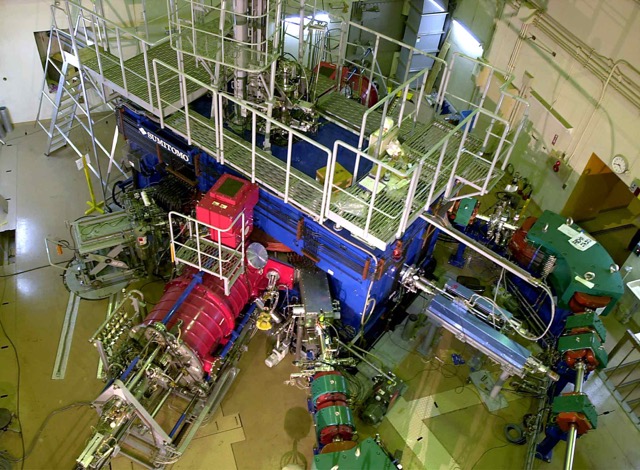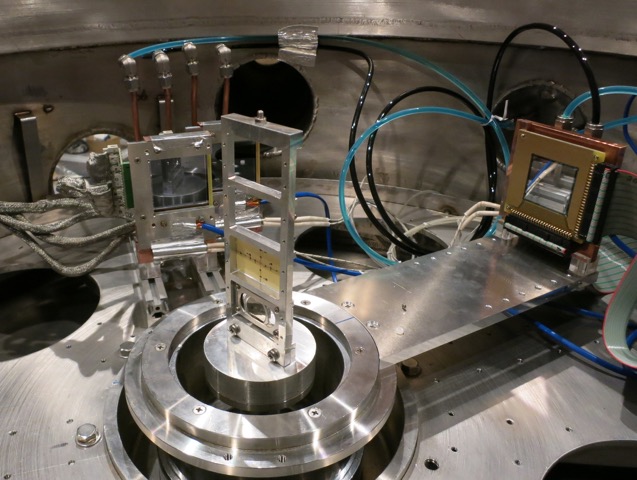Topics
2016.12.22
Hoyle state, gaslike structure in the nucleus
Nuclear Radiation Physics Group
The nucleus is composed of protons and neutrons, which are called nucleons. Its structure is well explained by the nuclear shell model. However, some excited states of nuclei can be described by the system composed of clusters, which are formed by some protons and neutrons. The second excited state in 12C is the typical cluster state. The energy and spin-parity of the second excited state in 12C are 7.65 MeV and 0+, respectively. It is considered to have a gaslike structure in the cluster model, in which three helium nuclei ( = alpha particles ) are weakly bound in each other, and also plays an important role of the carbon creation in the stellar nucleosynthesis (Fig.1 triple alpha reaction), which is not appeared in the Big Bang nucleosynthesis. This state was predicted by an astronomer, Fred Hoyle. Soon after his prediction, it was discovered by a Nobel prize laureate, William Fowler. For that reason, this state is called Hoyle state.
Although the Hoyle state plays an important role of the nucleosynthesis, its structure is still unrevealed. Its excitation energy and spin-parity cannot be explained with the ab-initio nuclear structure calculation using the latest supercomputer. Therefore, the reproduction of the Hoyle state is one of topics in the large-scale ab-initio calculation.
We investigate the structure of the Hoyle state, experimentally, using the AVF cyclotron (Fig.2) in Cyclotron and Radioisotope Center (CYRIC) by the precise measurement of the decay three alpha particles. When the Hoyle state decay into three alpha particles directly, their momentum distribution is considered to contain information on the structure. However, almost all events are the sequential decay through the 8Be channel due to the interaction between alpha particles. Now, we are planning to measure the momentum distribution of the decay three alpha particles using the higher precision measurement than the previous one (Fig.3) [1] in order to elucidate the structure of the Hoyle state.
[1] M.Itoh et al., Phys. Rev. Lett. 113, 102501 (2014)
 Fig.1 Triple alpha reaction |
|
 Fig.2 AVF cyclotron |
 Fig.3 Experimental set-up |

